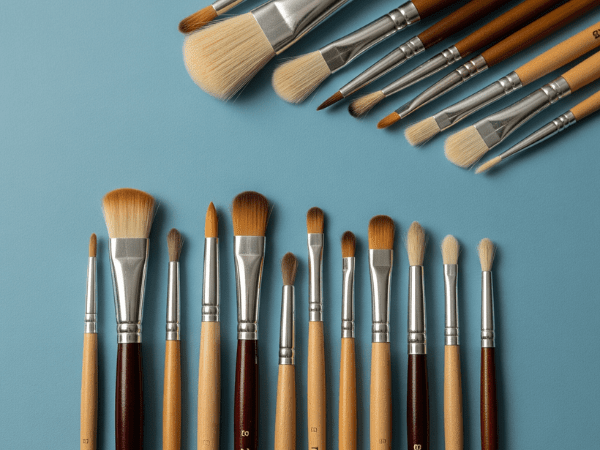
From Brush to Brilliance: Oil Painting Techniques to Elevate Your Art
Whether you are a beginner who wants to start with oil painting techniques or happen to be a seasoned painter, you can create stunning masterpieces if you can understand and become an expert in specific techniques. If you want to improve your skills, this is the time to order art supplies, invest in quality oil paint brushes and purchase painting kits that help you to try out these techniques effectively. If you’re building your workspace, don’t forget to buy wooden easel online to ensure a sturdy and comfortable painting setup.
1. Glazing
This method involves layering translucent oil paints over an already dried, solid-colored foundation. In this way, you can create deep, luminous, and bright color effects. When you layer glazes, you can intensify shadows, create atmospheric effects, or shift color tones in a subtle manner. Becoming skilled in this method requires patience, as each layer should be allowed to dry entirely before adding the next.
2. Impasto
This is the technique that you should try if you want to add emotion and texture to your paintings. To achieve a striking, textured finish, use a brush or palette knife to lay down generous amounts of paint. You can add dimension and make your brush strokes more prominent. Go for sturdy oil paint brushes with stiff bristles that can be effective for heavy painting. For this expressive style you would also like to purchase painting kits that include palette knives. For vibrant effects, experimenting with buy pastel colors online can also open new creative dimensions.
3. Scumbling
You have to brush a broken or thin layer of opaque paint over a dry underlayer in this method. Allow some of the texture or color underneath to peek through. You will love to use this method to create soft, hazy effects and also add a sense of atmosphere and depth to your painting. This can be especially useful for fabric textures, fog or skies. Use minimal paint and dry brush to achieve this kind of effect.
4. Underpainting
You might love to do this type of monochromatic sketch before coming up with your final layers. In this sketch, you can establish your lighting, values and composition, so that your colors can get a roadmap and mistakes can be avoided later. Before adding full color, you can use this step to be more confident about your final outcome. Purchase painting kits including various earthy base tones, if you are new to this type of painting. Make sure to choose from the best art supplies to get the richest pigments and smooth layering.
5. Dry Brush
By applying a small amount of paint with a dry brush, this method creates rough, textured marks with a scratch-like effect. If you want to add aging effects, highlights or surface textures such as hair and wood grain, this is a wonderful method to try. Look for fan-shaped or flat oil paint brushes with coarse bristles. You have to use completely dry brushes, as you will not be using any medium or solvent.
6. Alla Prima
You have to directly apply wet oil paint onto wet layers, without getting them dried. Often called “wet-on-wet,” this approach involves working with wet paint over another wet layer. If you want to create expressive, impressionistic style of painting, you will love to use this method that allows for direct blending of paints on the canvas. This is ideal for capturing a sense of immediacy, movement and light. Order fast-drying oil paints and brushes in various sizes, to get the most out of this style.
7. Chiaroscuro
If you want to create strong contrast between dark and light, add a three-dimensional effect to your painting and achieve dramatic tension, you should try this method. When you focus on the play of light and shadow, you can guide the eye of viewers and make your work emotionally more impactful. This painting style dates back to the Renaissance and is still used widely in still life and portraiture. You need to balance brush precision and value control. Using best oil paint brushes is essential for getting the best results with this technique.
8. Blending
It is through blending that you can achieve smooth transitions between tones and colors. This type of method is vital for achieving realism, particularly in soft backgrounds, skin tones or portraits. Place two neighboring colors next to each other, then softly blend their boundary using a dry, clean brush. For the best results, try to use synthetic blend or sable brushes. Modern brush markers can also offer interesting blending effects when used in mixed media with oil.
9. Grisaille
In this painting method you have to paint entirely in gray shades, to establish values before you add in color. This is just like underpainting, although more refined and complete. When the grisaille base has dried, layering color glazes over it brings the image to life—enhancing your skills in portraying depth, shape, and lighting. If you want to be an expert at structural accuracy before handling full-color compositions, this is the technique that you should try out.
Bottom Line
Whether you want to make your paintings expressive, dramatic or experimental, these techniques can help you. Every oil painting method brings a new sense of depth and feeling to your creative journey. Buy painting kits of the best kind today, and come up with the most compelling artworks.
